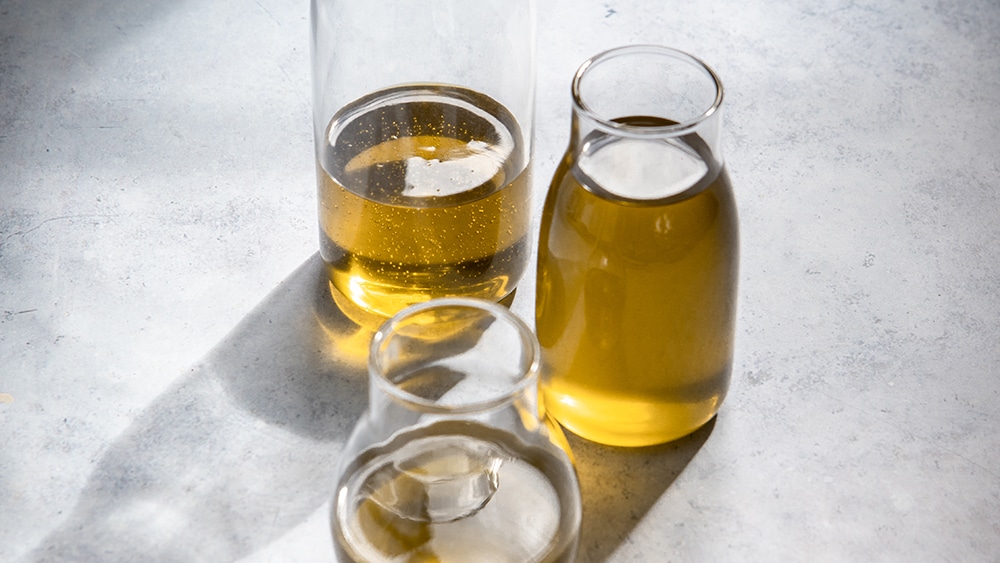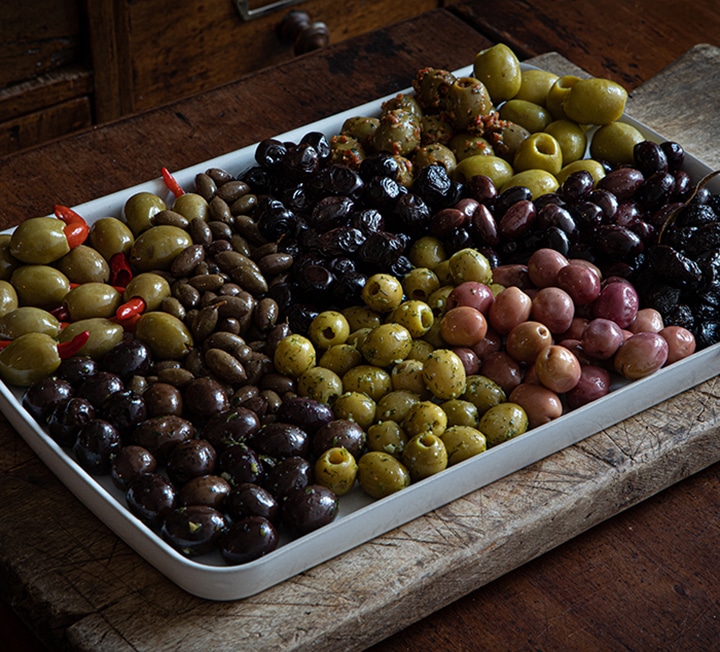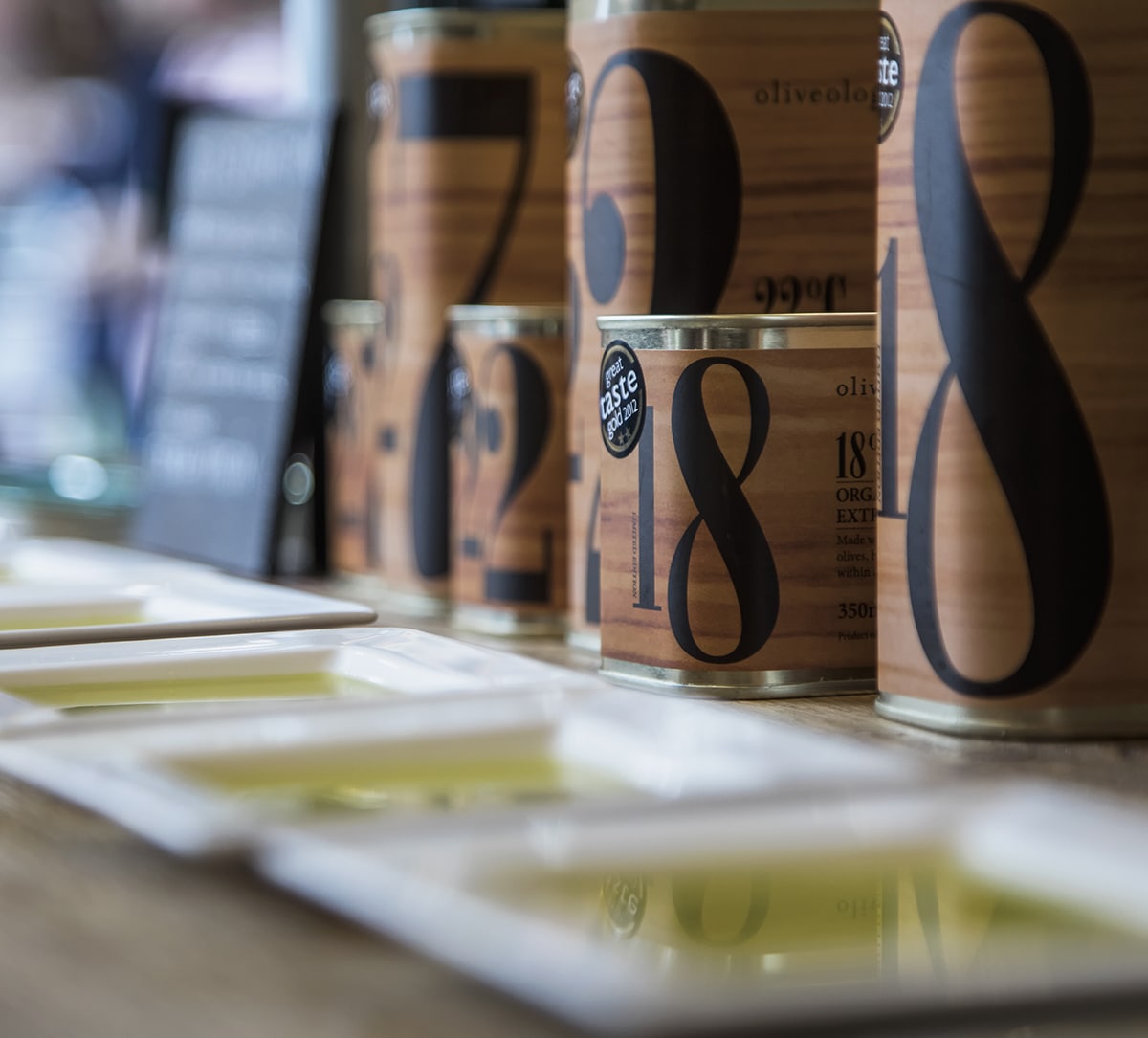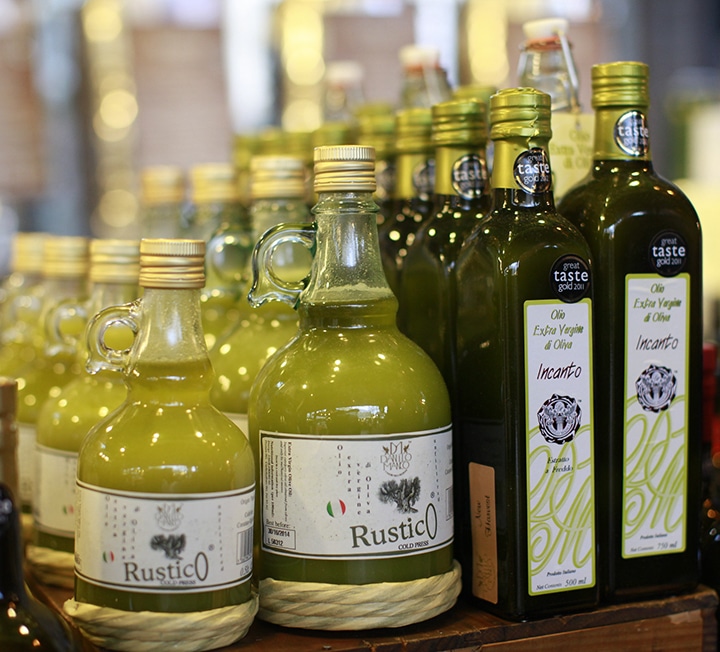Dress to impress: extra virgin olive oil
Ed Smith on the Market ingredients that, with minimum effort and maximum effect, can embellish a finished dish. This time: extra virgin olive oil


“OLIVES PICKED AND PRESSED EARLY IN THE HARVEST ARE GREENER IN COLOUR AND THEIR OIL IS FRESHER AND GRASSIER”
Image: Regula Ysewijn
“Finish with a drizzle of extra virgin olive oil”, like “season with salt and pepper”, is one of those throwaway lines we see at the end of a recipe so often that we barely take it in. And while the instruction is a clear one, it also horrifically undersells this vital action: good extra virgin olive oil is not an optional seasoning; it’s a crucial ingredient that can have a disproportionately positive effect on a dish. Oh, and more often than not you need a ‘glug’, not a ‘drizzle’.
By my count there are around 40 different pure, cold-pressed extra virgin olive oils available at Borough Market (not including the flavoured ones). There are bottles and tins from Greece, oils from Umbria, from Calabria, from the north and south of Spain and from Croatia, too. Some are blended, some are unfiltered, some come from a single variety of olives, some are extracted from olives from just one small orchard. All of them really taste of something. Here is an incredible natural ingredient that can add depth, structure, aroma and spice to your food.
But what is that taste? It’s actually quite hard to usefully express the character and flavour of extra virgin olive oil. There are plenty of adjectives bandied around: ‘assertive’, ‘rounded’, ‘fruity’, ‘spicy’, ‘olivey’. Do those help? By my reckoning, the quality of an oil comes back to two core characteristics – ‘peppery’ and ‘grassy’ – and, specifically, when those notes hit and for how long they persist.
The peppery hit of an extra virgin olive oil can be really quite aggressive and sometimes fairly astringent, depending on the olive variety but also when those olives were harvested; early, less ripe olives produce more peppery oils. It’s all down to levels of oleocanthal, a compound that’s responsible for the burn, but also olive oil’s famed anti-inflammatories and antioxidants. These qualities will fade in the bottle over time, and also through exposure to warmth and sunlight – a good reason to use your oil liberally.
As well as having that astringency, olives picked and pressed early in the harvest are greener in colour and their oil is fresher and grassier in flavour than those that ripen on the tree. This is because those qualities are largely due to the levels of chlorophyl in the olives when the oil is extracted, and chlorophyl content decreases as olives get riper.
You can imagine, I’m sure, the myriad factors involved in all of this. However, it is relevant to note that all extra virgin olive oil comes from the first pressing of a fruit, and the temperature of the oil through that process must not exceed 27C. To do so would mean it couldn’t be called ‘cold-pressed’. The higher the temperature, the more flavour and character is removed. I highly recommend trying Oliveology’s oils extracted at 17C, 18C and 22C to taste this for yourself.
So how and when to use it? Well: on cooked meats and fish, on risottos and pasta, on soups, soft cheese and charcuterie, too. Oh, and also on vegetables, green ones in particular, particularly if they’ve been grilled, charred or barbecued; though boiled, steamed and raw enjoy a slick of oil as well.
You know this already, I think. Did you also know about adding extra virgin olive oil and a few flakes of salt to a morning bowl of Greek yoghurt with seeds or granola? Try it. Also, over good vanilla or chocolate ice cream, not to mention bitter chocolate tarts and mousses…
The point I want to make is that it’s really worth (a) finding an extra virgin olive oil that you enjoy, and then (b) using it with abandon. If ever you wonder whether that steak or pork chop or piece of cod or mound of vegetables might benefit from some oil, the answer is: “Of course, what are you waiting for?” Yes, some oils feel expensive, but even when poured liberally they go a long way. Celebrate the flavour and viscosity of an extra virgin olive oil puddle. It’ll bring the dish together and make it better, too. As ever, the best thing to do is to use Borough Market’s setting to your advantage: walk a few steps to taste oils from around the world, ask questions, taste again and settle on one. Then splash it, pour it, glug it. Before returning to try, buy and use more.


